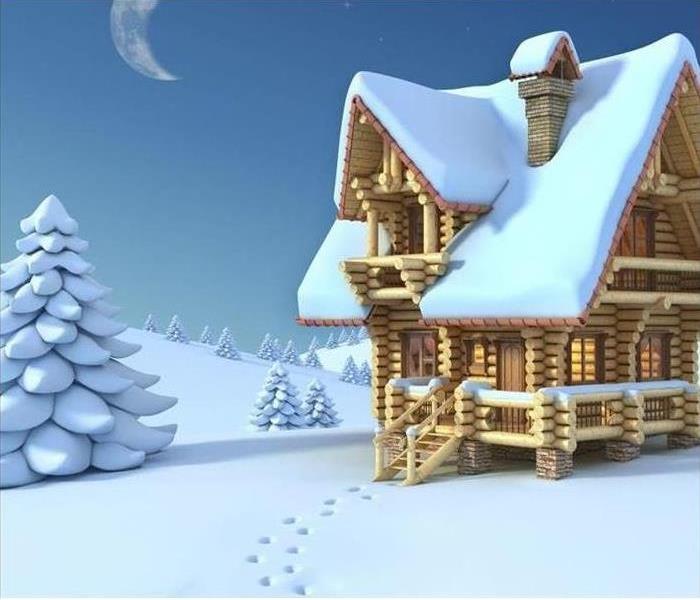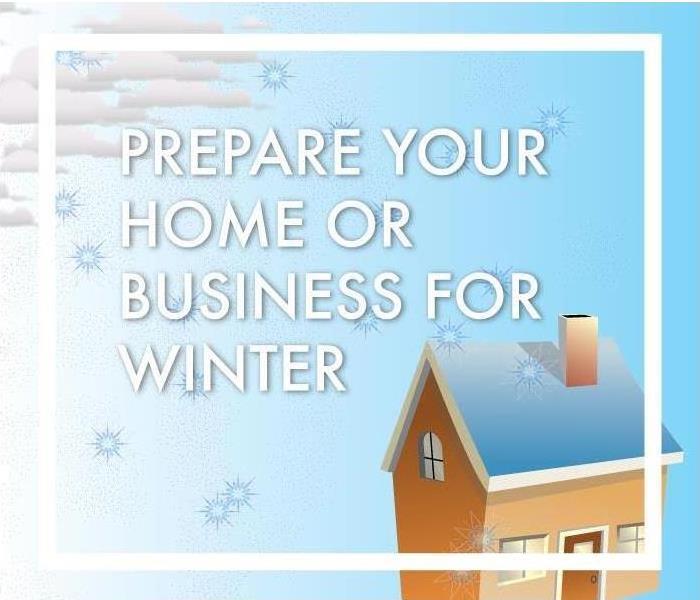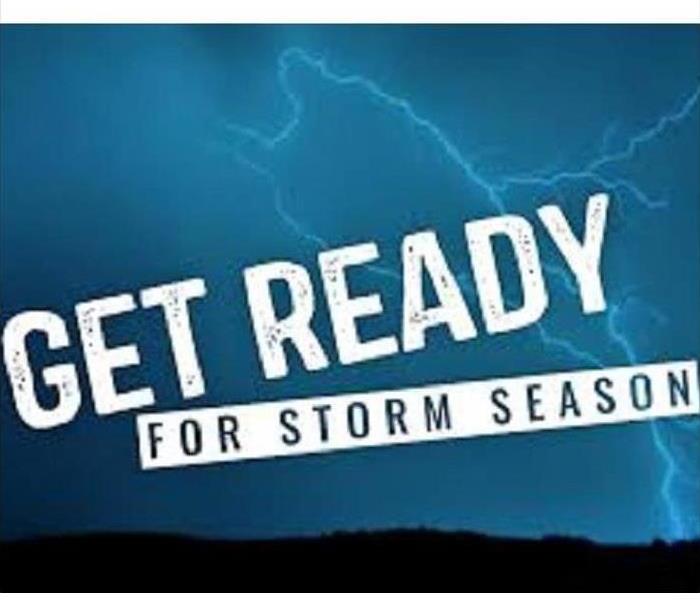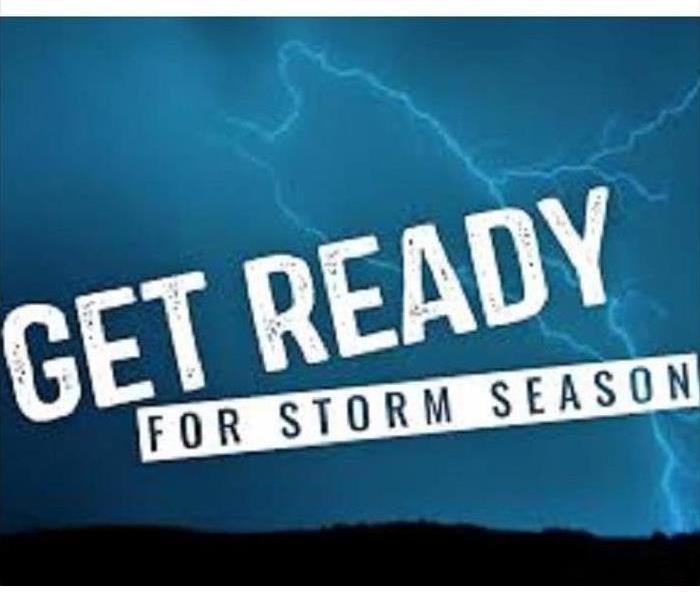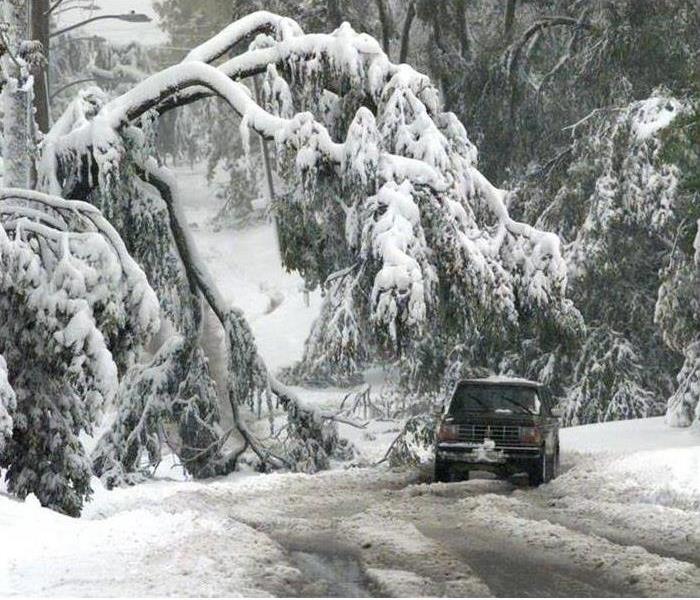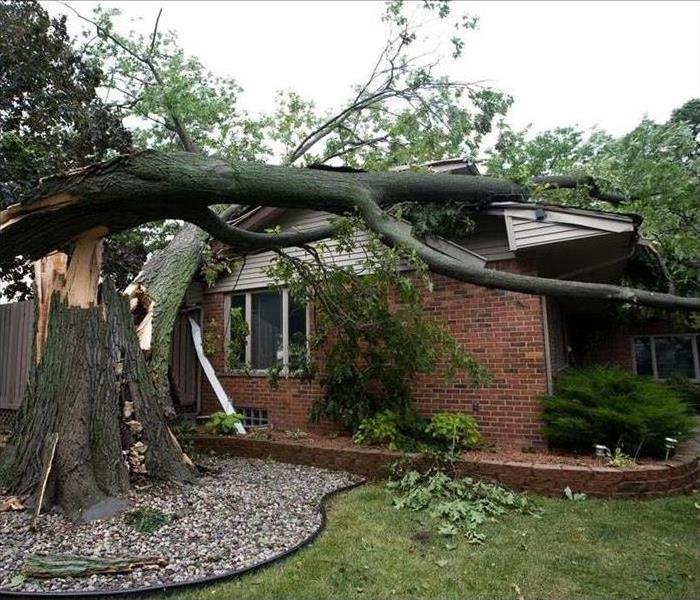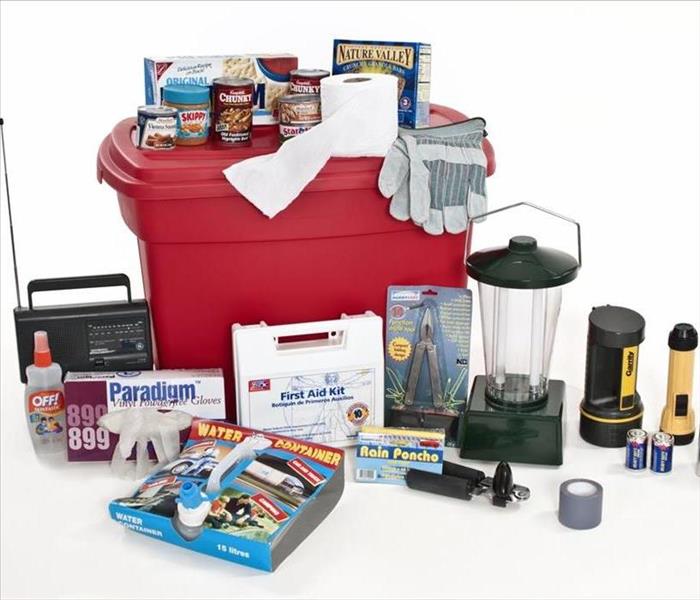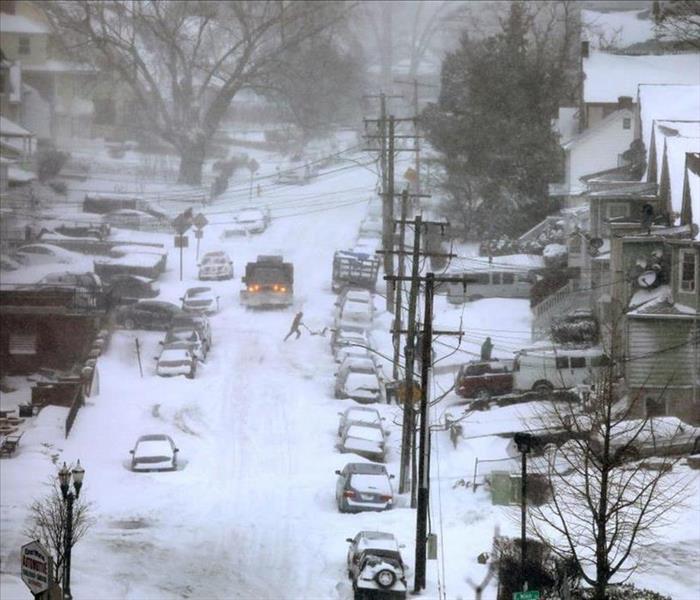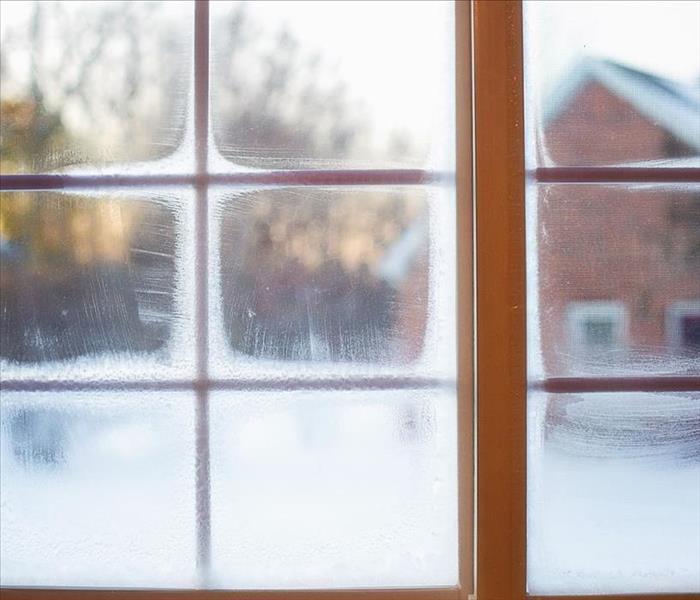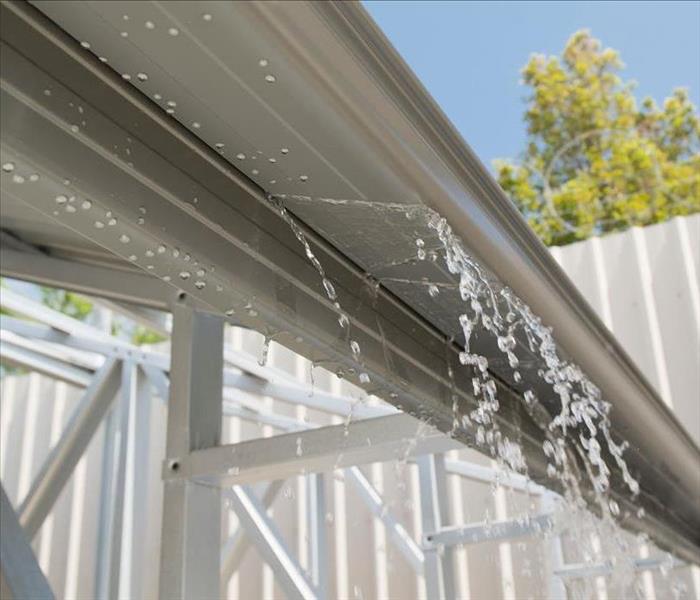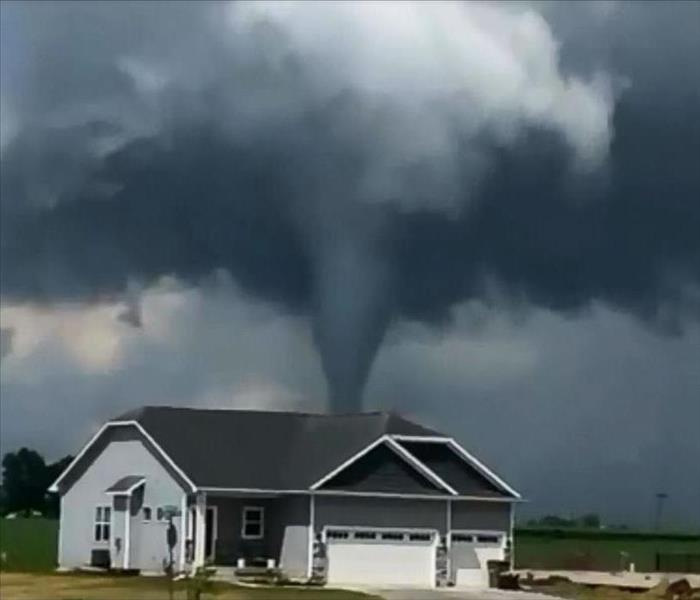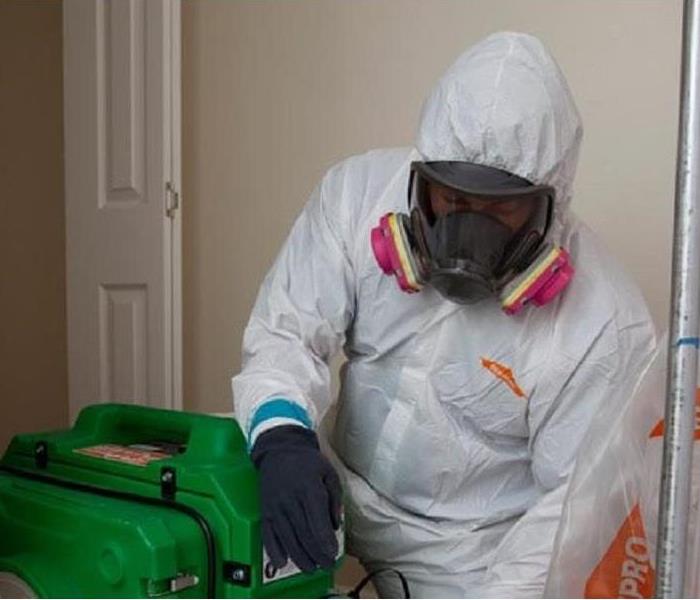Recent Storm Damage Posts
Restoring Communities: Storm Clean-Up Services in Sioux City, IA
4/1/2024 (Permalink)
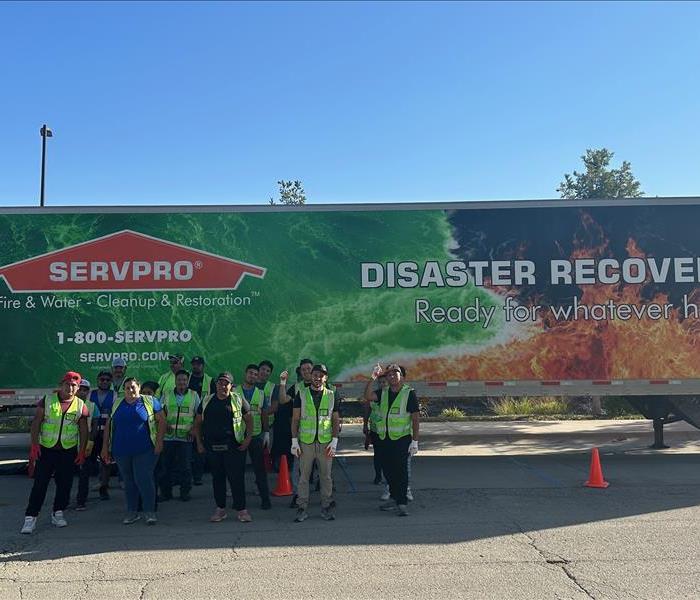 SERVPRO team on the scene of a storm damage
SERVPRO team on the scene of a storm damage
When storms strike, the aftermath can be overwhelming. At SERVPRO of Sooland, serving the Sioux City, IA area, we are here to help you recover and rebuild after disaster strikes.
- Rapid Response: Our Disaster Response Team is ready to respond swiftly to storm damage emergencies, providing immediate assistance and support.
- Thorough Services: From debris removal to structural repairs, we offer comprehensive storm clean-up services tailored to your needs.
- Community Support: We are committed to serving our local community and helping residents restore not only their properties but also their lives after a storm.
Trust SERVPRO of Sooland to be your partner in disaster recovery. Contact us today for reliable and compassionate storm clean-up services in Sioux City, IA. Call us at 712-274-2416.
Water Damage Cleanup Mistakes
8/3/2022 (Permalink)
Water damage cleanup mistakes can lead to a lot of headaches and stress. If your property needs water damage restoration, here are a few of the mistakes you’ll want to avoid.
Waiting Before Cleanup
Water damage can lead to a lot of problems. The first rule of cleanup is to do it as soon as possible. Every minute that your belongings and property stay submerged lessens the chances of you getting that item or property back to its pre-damaged state. If you wait until it’s convenient to perform the cleanup, you’ll only end up with bigger problems.
Wrong Equipment
Using the wrong equipment will only aggravate the problem. Plus, the kind of equipment or tools you have might not be suitable for handling the water in your home. That means you won’t succeed at drying your home completely, which will leave your home at the mercy of mold and mildew growth. Don’t let that happen. Hire pros to handle this for you. They have specialized equipment to ensure the fast and efficient drying of your belongings and property.
Neglecting Important Details
Most of the time, people forget about the items they slog through when they wade through water damage. But there could be an electrical problem, broken glass, and other items that could injure you. It’s best that you hire pros instead of tackling this on your own. Restoration experts know what to look out for and how to do this in the safest way possible. They’re much better equipped to handle this than you with your makeshift tools.
Not Doing Your Homework
When you look for a restoration service, don’t hire the first company that you find. Look at the company’s history and background. SERVPRO of Sooland is your trusted resource for cleaning and restoring water-damaged property. Our teams are IICRC certified. We have the latest advanced equipment and training to make sure your water damage problems are solved completely.
If you have water damage to your home or business property, call us anytime 24/7 at 712-274-2416. We'll be there to help!
Spring Storms Affect the Sooland Area
2/10/2022 (Permalink)
Whether it's your home or your business, strong storms can wreak havoc on your property.
Living in the Sioux City area we have grown accustom to living with the lively weather patterns that the spring season brings.
Sometimes, there's not much you can do to protect your property when 100+ MPH winds hit. Generally, we focus on what's most important... our loved ones. After the storm clouds clear a small percentage of our population will find damage to their homes and businesses.
SERVPRO is prepared to assist after spring storms.
So whether it's a flooded basement in your home, or the entire roof ripped from your building, there's only one call to make. The cleanup professionals at SERVPRO of Sooland quietly taking to the streets 24 hours a day, 7 days a week with the best training and equipment. Call us at 712.274.2416
We are prepared to do the hard work necessary to make it "Like it never even happened."
3 Types of Weather Related Damage that could Impact your Business
2/10/2022 (Permalink)
3 Types Of Weather-Related Damage
As an Sioux City area business owner, you might think of rainstorms and other types of flood damage when it comes to the kind of harm bad weather might cause to your commercial building. However, trouble can come from other sources as well, even from those you did not expect. Before the storm season hits your area, it may be helpful to understand what kind of weather-related harm could befall your building, especially those that are not flood related.
1. Impact Damage
Storm damage can be common during high winds, when large tree branches, neighborhood objects like trash cans and other debris might strike your building. This can be especially damaging if a falling branch or projectile breaks a window. If you are expecting high winds to hit your area, consider covering your windows with thick sections of wood or treated rubber, especially at ground level.
2. Electrical Damage
While flooding is a common cause of damage to commercial buildings during bad weather, other types of events could impact their electrical systems to the point where they might need replacing. For example, ice and hail storms can affect fuse boxes and heating, ventilation and air conditioning units, rendering them inoperable. If your HVAC and electrical controls are on the exterior of your building, consider protective covers that can withstand all different types of weather.
3. Roofing Damage
Flood damage would likely affect the lower floors of your business; however, heavy rains and wind that often accompany flooding could impact its roof as well. Wind may pry tiles off your roof or tear away sections of protective material, exposing the underside to moisture. Contacting a flood damage and restoration company may be useful when it comes to finding out how to protect your roof from the kind of harm powerful storms can cause.
Bad weather and flood damage are likely sources of worry for you as a Sioux City area business owner. However, when you know how to protect your property, you may feel greater peace of mind when wind, rain and floods threaten your area.
What should I do if my home is flooded?
2/8/2022 (Permalink)
Don't take a flooded home as a lighthearted matter. You should be very serious in your attempts to enter your home after it has been flooded. Keep these in mind after a flood damage in the Siouxland area.
- Disconnect all the Electronics - these can start fires if left on
- Move anything not Bolted to the Ground - furniture and tables should be moved out
- Have a Restoration Company Remove the Water - extraction of water helps with the drying process
- Get Rid of Moisture in the Affected Area - dehumidification will keep the mold from growing.
- Disinfect the House - part of the cleaning process is to disinfect the house before rebuilding.
- Dispose of Waste Responsibly - tearing out items from the home is naturally the case. Remember to take into consideration items with asbestos or you could be fined for disposing them incorrectly
Winter Storm Preparations
1/10/2022 (Permalink)
In the Midwest, we are no strangers to a bad winter. With freezing temperatures, lots of snow, and high winds, winter storms can be dangerous for your home and your family. Here are some tips to make sure you’re ready for the Midwestern winter.
Be prepared to lose power.
The biggest worry during a storm is that you will lose power. Although this is usually restored within a few hours, it is very possible to lose power for multiple days if there are multiple power lines down throughout the area. Stocking up on non-perishable food, warm clothing, and buying batteries is essential. If you can have a generator fueled and ready to power your home, this would be the best-case scenario to ensure your families safety. Be in contact with friends and family and have an emergency home to go to in case you need to stay a few days somewhere else while power is restored.
Be aware of frozen pipes.
In freezing temperatures, water pipes are very susceptible to freezing. Even if your home has power and heat, pipes can still freeze. To prevent this, use water sources regularly so that water flows through pipes and doesn’t have time to build up and freeze. If you try to use a sink, toilet, or appliance and there is no water coming into it, this is a sign you might have a pipe break. Another tip for prevention, is to have a tiny drip of water flow through your pipes to stop pressure from building up.
Remove snow as far away from home as possible.
If feasible, push snow away from your home. This will prevent ice from building up around your home and its foundation, which could cause cracks and leaks inside the house. Pushing snow away from your home will also help during spring when snow and ice begins melting, if there is too much water near your home, it can seep in through the foundation or other cracks in your windows or siding. Although sometimes snow has to be piled up next to your house, when possible, push it as far away as possible.
We hope you and your family stay safe this winter! If you ever suspect you have water damage, give us a call and we can use our water detection technology to find any leak or pipe break!
Broken Window During a Storm?
1/6/2022 (Permalink)
Storms can lead to unexpected damages in your home that can cause much bigger issues. In the event of a broken window, it is important deal with this issue immediately.
First you must take photos of the damage for insurance purpose and then clean the glass from the area as best as possible to minimize risk of cutting yourself. Once the glass is cleaned, a tarp can be secured over the window until a new window can be put in.
A restoration company like SERVPRO of Sooland can be used to do the full clean up and assess anymore damages after a storm. Never hesitate to contact the professionals.
Preparing Our Youth For Disasters and Emergencies
10/1/2021 (Permalink)
When the unexpected happens, will your child know what to do? Disaster can strike anywhere, usually with little to no warning. If your child is put in an emergency situation and doesn't know how to react, they could be severely hurt and may even feel significant anxiety that can follow them for years. With the proper education, though, your child can feel more secure, confident and helpful in the event of a disaster.
Preparing Our Youth
Ultimately, it takes the whole community to educate our youth through preparedness tips and advice. With everyone doing their part, children will understand the seriousness of an emergency situation and strive to become leaders in their classrooms and neighborhoods, ensuring that everybody is prepared for the next disaster. The Federal Emergency Management Agency (FEMA), the American Red Cross and the Department of Education have worked together to create the National Strategy For Youth Preparedness Education, a document that outlines a vision for prepared youth in the United States, and how communities can turn that vision into a reality. This document seeks to educate youth and their parents so that communities are better able to prepare for, respond to and recover from future disasters.
How to Prepare Youth for Emergencies and Disasters with Nine Steps
The National Strategy document indicates nine crucial steps that people and organizations at the local, state and federal levels should take to create a strong and prepared youth community. Here's how you can help prepare young people for several types of emergencies and disasters:
- Make it important. Elevating the importance of youth preparedness learning programs in schools and civic organizations allows children to recognize that being prepared is crucial throughout every area of the community.
- Evaluate. If existing youth preparedness programs aren't up to par, develop guidance, tools and up-to-date protective actions in order to ensure that the children in your community are given proper direction.
- Support. Communities, organizations and schools should be able to prepare children without facing unnecessary resistance or interference.
- Create. Establish a relationship between local youth and the first responder community, so that your kids can understand how first responders react in emergency situations. Your kids can also learn from their own heroes what they can do to help in a disaster.
- Link. Connect youth preparedness to family and community participation, so that your child can become an advocate in your area.
- Make school preparedness key. Schools, by their nature, promote broad community participation already, so adding preparedness programs that include curricula, drills and exercises for all local disasters can help children understand what to do when faced with a crisis.
- Build and strengthen. Creating and maintaining partnerships among stakeholder agencies and organizations allows your community to receive up-to-date information about youth preparedness best practices. Local leaders can also be advocates to discuss your community's needs, especially if your area is prone to certain natural disasters.
- Identify. Find opportunities to insert youth preparedness education into youth culture, such as using social media or local ads to initiate a conversation about the importance and effectiveness of preparedness programs.
- Design. Create a sustaining model that designs, develops and delivers valuable programs to train youth in your community. Since certain areas are known to have specific recurring natural disasters, it's important to create a plan that's unique to your community's needs.
By implementing these nine priority steps in your community, your children can receive training to help them feel confident when faced with a disaster. Giving them the tools they need to understand how to prepare for, respond to and recover from several types of emergencies – from fires to floods and more – can make all the difference when disaster actually strikes.
Flooding and Your Basement
10/1/2021 (Permalink)
A flooded basement hits like an oncoming train. Whether the problem stems from a broken pipe, failed sump pump or the result of a heavy downpour that found its way inside, a flooded basement needs to be dealt with immediately to prevent long-term damage.
When dealing with basement floods, there are some things you can and should do immediately, some things you might want to consider doing in the future and times when you should really call in the professionals.
Flooded Basement: Safety First
Safety should always be a priority. Entering a wet basement can be dangerous and even deadly. Before stepping into a flooded basement consider the following:
- Is there a risk of electrical shock? If it's safe to access the main breaker box, turn off the power before you enter the basement. If the breaker box is located in the flooded basement, contact your local power company or a trusted electrician to help first.
- Do you smell gas? Gas leaks are deadly and dangerous. If you smell gas, get out of the house and alert your utility company.
- Is the flood water contaminated? Sewage, chemicals and other pollutants in flood waters pose a health risk to humans and animals. Avoid contact with contaminated flood water and any items that may have been in contact with contaminated flood water.
- Is the flooded basement still structurally safe? If there is any question regarding the structural integrity of the flooded basement or the house above it, do not enter. Call for professional help.
How to Clean Up a Flooded Basement
If it's safe to enter, there are several things you can do to begin cleaning up your flooded basement. Before you dive in, remember the first rule is always safety. Wear protective clothing, safety glasses and gloves as you clean and inspect the basement. Make sure the space is well-ventilated, which also speeds the drying process.
Retrieve and remove: The quicker your personal items can be removed from water, the better the chances for repair and restoration. You need to get items out of the basement and dry off any remaining dampness to reduce the likelihood of mold growth.
Extract water: If the water is just a couple inches deep, you may be able to remove it using a wet/dry vacuum or portable sump pump. Both of these items can be rented rather than purchased. If you're wading through several inches of water or more, though, you'll likely need to call in professionals like those at SERVPRO of Sooland
Remove rugs: Any area rugs need to be removed and dried out immediately. If possible, hang area rugs outdoors to dry or opt for a professional cleaning. If the basement was carpeted, you may have to remove the carpet. Water can damage not only the carpet fibers but also the glue, backing, padding and underlayment, leaving the carpet at higher risk for mold. However, do not attempt to remove tacked-down carpeting yourself, leave it to the professionals.
Run a dehumidifier and fans: To prevent the development of mold after a basement flood, it's essential to keep the level of humidity as low as possible. If the weather is favorable, open any and all windows you can, then run a dehumidifier and fans to increase ventilation and lower the humidity levels.
Clean and disinfect: After the water is extracted and the basement thoroughly dried, the whole space needs to be cleaned and disinfected. Carefully wash and sterilize anything the flood waters touched that you were able to salvage.
Keep an inventory list: As each item is removed from your flooded basement and treated for water damage, add it to an inventory list. Keep a record of all the details regarding what was damaged in the flood, and hold onto estimates and receipts from any restoration or repair procedures. These documents will support any insurance claim you plan to make.
SERVPRO has been helping homes and businesses cope with water damage for more than 54 years. When your basement floods, call SERVPRO of Sooland to handle the water extraction, drying and any necessary mold remediation.
How To Protect Your Building Envelope
2/8/2021 (Permalink)
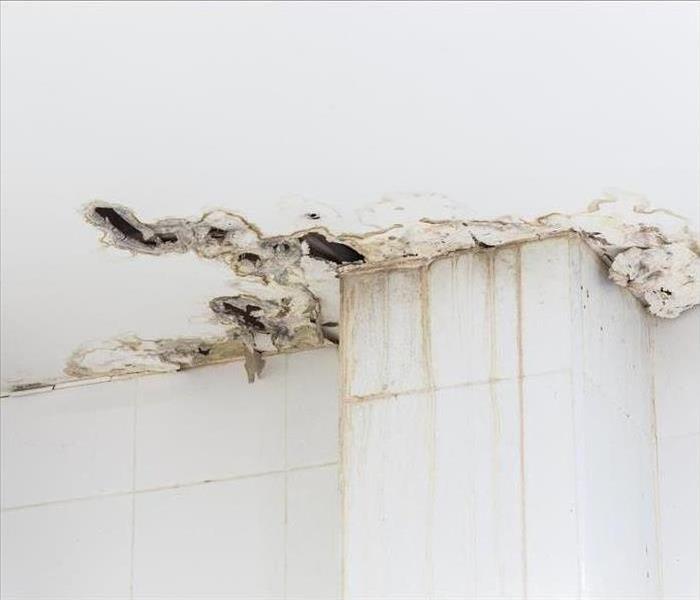 Protect your building envelope
Protect your building envelope
3 Steps To Repair The Envelope Of Your Building
Find Moisture Leaks
Wear and tear, damage from pests, missing roof shingles, and sagging doors and windows could all provide a way for moisture to get into your building. A visual inspection may be enough to find out how water is getting into the building. Inspect flashings, edges of doors and walls, expansion joints, and everywhere that one material meets up with another material. Remember that some water damage, such as black mold growth, can't always be found with a visual inspection. Once or twice a year, you should schedule professional inspections.
Contact Repair Professionals
Sometimes property owners are tempted to ignore leaks until substantial problems arise. This can become a very expensive mistake. Instead, it's best to contact professionals with the training and supplies necessary to repair existing rain damage and prevent more water from getting past the building envelope.
Improve Preventative Measures
One area of damage is usually a sign that there's widespread damage. It's rare that one spot of damage is an isolated occurrence. A single gap between the window corner and the exterior wall should prompt you to update the sealing around all of the windows. Make sure that routine maintenance and professional inspections are scheduled consistently throughout the year.
The best way to protect the protective envelope of your building from rain damage is regular inspections and repairs completed by water damage repair and reconstruction professionals. Be proactive when it comes to protecting your building from expensive damage.
The Purpose of Flood Cuts
2/8/2021 (Permalink)
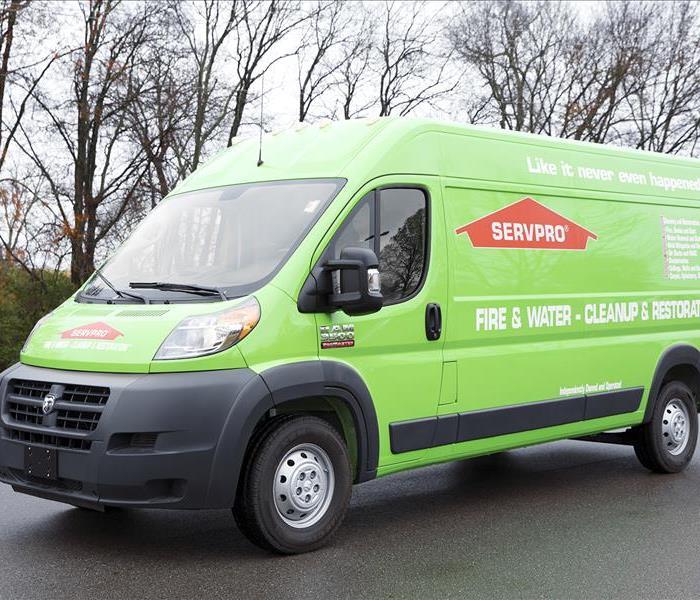 Heavy storms can lead to severe flooding damage.
Heavy storms can lead to severe flooding damage.
When Is a Flood Cut Necessary?
A flood cut is the method the cleanup team uses to tear out materials that can't be salvaged. Technicians will probably need to use a flood cut if the water damage meets certain criteria:
- High levels of contamination
- Suspected damage in hard-to-reach areas
- Compromised structural integrity of the wall
Flooding from a storm almost always leads to a flood cut because the water is contaminated. If the standing water in your home comes from a clean sources, however, technicians may try to save the wall, even if there is a lot of water.
How Is a Flood Cut Measured?
When removing drywall, the mitigation team wants to make sure that it tears out all the damage. Specialists typically make a flood cut at least 12 inches above the spot where the water damage ends. This ensures that any unseen damage is also removed.
What Happens After the Flood Cut Is Made?
Once the cut is made, the technicians remove the drywall. They take out all the damaged material, including any damp insulation behind the wall. Before they rebuild, they have to make sure the area is clean and dry so that no secondary damage occurs.
If a storm causes flooding in your home, it may take more than simply removing the water and wiping down surfaces to complete the repairs. Technicians may have to make flood cuts on your walls to remove all the damage.
3 Tips for Preventing Post Flood Mold
2/8/2021 (Permalink)
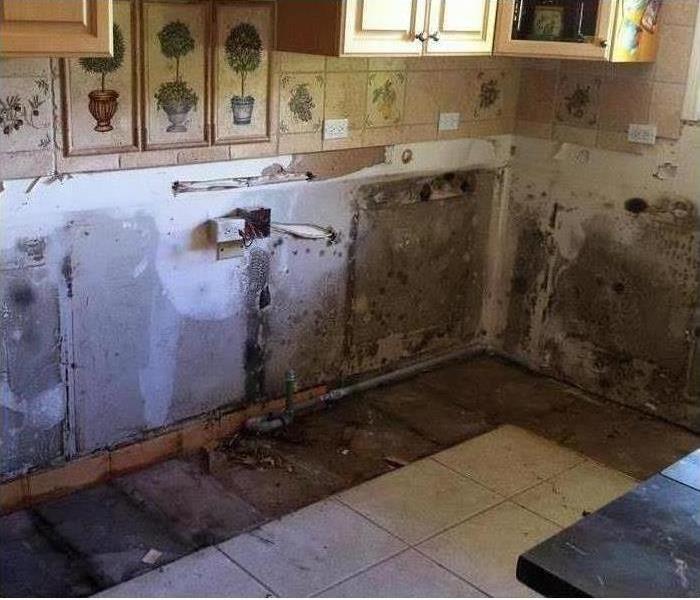 Mold growth in a Colorado Springs kitchen.
Mold growth in a Colorado Springs kitchen.
3 Tips for Preventing Post Flood Mold
Thoroughly Dry the Area
The first step to take care of in the event you may have mold damage is to completely dry any area affected by water. In many cases a professional restoration company may use a dehumidifier. Getting rid of the water can help make the area inhospitable to mold spores.
- Have an Expert Test for Mold
On some occasions the potential mold growth may not yet be visible. If you believe you may have mold in your home, even after drying and sanitizing the flooded area, then a professional may be able to perform a test. Testing can include taking air samples, pulling a sample from an at-risk material, or taking a surface sample. If mold has been found, then your mold remediation professional can formulate a plan for mold removal.
- Clean Any Water Damaged Items
Another common tip for complete mold removal includes thoroughly cleaning any items that may have been affected by the storm damage. Mold spores can grow on any organic material that contains moisture. This can include carpeting, wood, upholstery, and even drywall. Fortunately, there are a number of methods to properly clean and sanitize these items.
Because mold growth usually occurs in damp areas, thoroughly drying any flooded areas can help prevent this type of problem. If you believe mold has already set in you can have a professional test for spores. It is also a good idea to properly clean any items affected by the water damage as well. If you have any questions a professional may be able to help.
Things to Check after a Storm
1/5/2021 (Permalink)
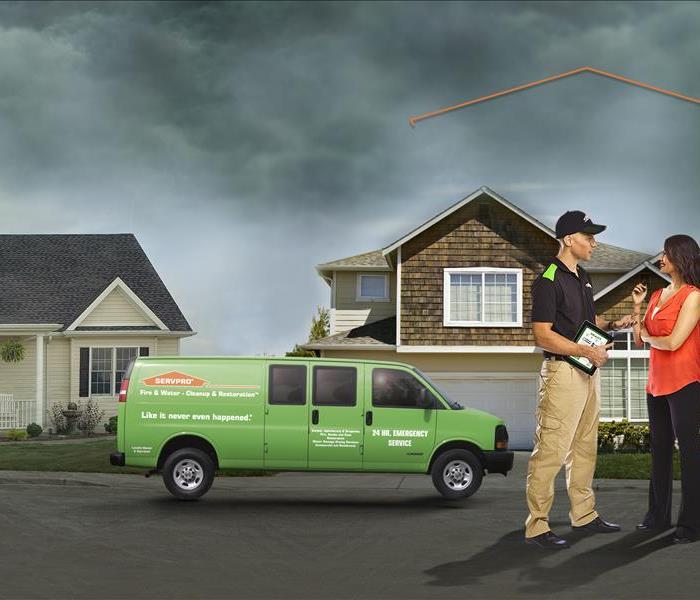 Storm damage
Storm damage
Storms bring heavy winds and rain, and can cause thousands in damage. After a big storm, it is advisable that you check around your property to see what has been damaged. Some things, if left unattended, can cause further damage. These are the locations we recommend checking:
- Roof-Check for broken or missing shingles. The shingles are overlapped to help waterproof your roof. Without these shingles, your roof is vulnerable to water damage and if the water does get into your roof, it can cause mold.
- Gutters- Are your gutters draining properly? If they are clogged, water can seep into your roof or walls, which can be a costly fix.
- Basement- If the rains were heavy, it could overwhelm your sump pump and cause a flood in your basement.
Storms can be scary, but the aftermath can be even scarier and costly. Be proactive after a storm to help avoid any water damage.
SERVPRO Tips-Let's Get The House Ready for Winter
1/5/2021 (Permalink)
Winter weather causes $1 billion in insured losses every year. With these tips, SERVPRO of Sooland hopes to help you avoid these losses.
- Protect indoor pipes- There is an entire blog post about this, but I wanted to touch upon it again, because it’s very important. A burst pipe can cause $5,000 or more in damage. Protect your pipes by insulating them with foam rubber or fiberglass sleeves. Consider focusing on areas like the basement, where 37% of burst pipes occur.
- Insulate your attic or crawl space- A lot of heat can escape through these locations if there is no insulation. There are many different sources online that can inform exactly which kind of insulation to use and how much is appropriate for the location.
- Service your chimney or furnace- The biggest cause of house fires are heating equipment, such as space heaters, chimneys and fireplaces. They should be serviced and inspected annually before use to guarantee their safety.
- Repair loose roofing shingles- Have a contractor do inspections and repairs before the first snow. Without these repairs, the moisture from the snow could leak into the house causing water damage.
- Inspect and clean gutters- Clogged gutters can cause backups and then freeze once temperatures drop. This can cause issues with water drainage, which can lead to water damage in the home.
- Secure outdoor water sources- Drain and store hoses before the first frost to prevent the water inside the hose freezing. Also, shut off the water supply to the hose bibs to avoid any water leakage.
SERVPRO of Sooland reminds you to take care of any home issues before winter to be able to enjoy a nice, safe winter.
Winter Storm Hazards
10/30/2020 (Permalink)
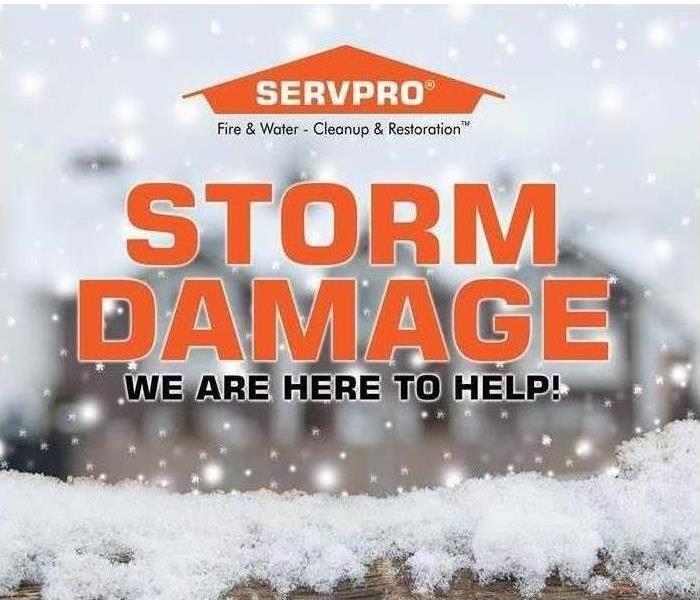 Give us a call, we will assess the situation "Like it never even happened."
Give us a call, we will assess the situation "Like it never even happened."
Many destructive impacts can come out of a single winter storm. Are you prepared for the coming winter? The array of hazards that can come from a winter storm are sometimes countless.
- Ice: Accumulations of a half inch or more, because of it's weight can cause widespread destruction and power outages and can have a crippling impact.
- Wet Snow: Much like ice accumulation, wet snow adds extra weight and stress, increasing the chance of damage. Moist snow sticks easily to trees and power lines.
- Snow on Roofs: Several feet from one or multiple storms accumulating on a roof can add stress, causing them to collapse.
- Flooding After the Snow: A rapid warm-up or rain following a winter storm with an expansive snow pack can set the stage for major flooding.
Melting snow and ice after a storm can also cause damage to the inside of your home or business. Call the professionals at SERVPRO of Sooland to assess the situation and put you to Pre-Winter condition, "Like it never even happened."
Call us at 712.274.2416
Flood Alerts
10/6/2020 (Permalink)
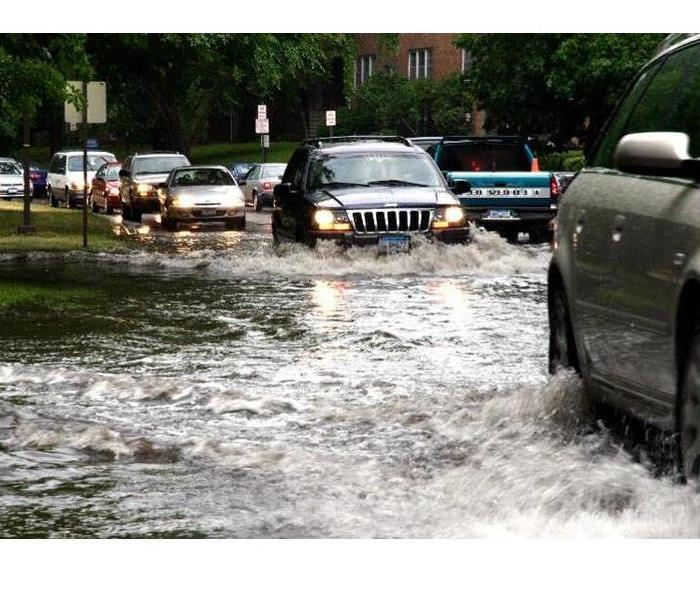 Flood Advisory: Be Aware
Flood Advisory: Be Aware
Flood Alerts
When it comes to weather alerts, there is always confusion on what flood watch, flood warning, and flood advisories, and flash flood warning mean. It’s good to know the difference so you can take the appropriate course of action for each event. According to the National Weather Service, here is the meaning of each of these alerts.
Flash Flood Warning: Take Action! A flash flood warning is issued when a flash flood is imminent or occurring. If you’re in a flood prone area, move immediately to higher ground. A flash flood is sudden and violent, and it could take anywhere from minutes to hours to develop. It’s even possible to experience a flash flood in areas not immediately receiving rain.
Flood Warning: Take Action! A flood warning is issued when the hazardous weather event is imminent or already happening.
Flood Watch: Be Prepared: A flood watch is issued when conditions are favorable for a specific hazardous weather event to occur. A flood watch is issued when conditions are favorable for flooding. It does not mean that flooding will occur, but it is possible.
Flood Advisory: Be Aware: A flood advisory is issued when a specific weather event that is forecast to occur may become a nuisance. A flood advisory is issued when flooding is not expected to be bad enough to issue a warning. However, it may cause significant inconvenience, and if caution is not exercised, it could lead to situations that may threaten life and/or property.
SERVPRO of Sooland specializes in the cleanup and restoration of residential and commercial property after a fire, smoke or water damage event. We can handle any size disaster!
Prepare your home or business for winter weather
2/19/2020 (Permalink)
Winter weather brings freezing temperatures, and the Tigard/Tualatin and surrounding area is anticipating snowy conditions. Ensure your home or business is prepared by reading the tips below.
- Drain water from the swimming pool and water sprinkler supply lines. Do NOT put antifreeze in these lines unless directed; antifreeze is environmentally harmful and is dangerous to humans, pets, wildlife, and landscaping.
- Close inside valves supplying outdoor hose bibs. Open the outside hose bibs to allow water to drain. Keep the outside valve open so that any water remaining in the pipe can expand without causing the pipe to break.
- Add insulation to attics, basements and crawl spaces, if needed. Insulation will maintain higher temperatures in these areas.
- Ensure that areas, where water supply lines are located, are insulated enough. Consider leaving kitchen and bathroom sink cabinet doors open and dripping overnight if you think they risk being frozen.
- Consider installing specific products made to insulate water pipes. Newspapers can provide some degree of insulation and protection to exposed pipes - even ¼” of newspaper can provide significant protection in areas that usually do not have frequent or prolonged temperatures below freezing.
If you will be going away during cold weather, leave the heat on in your home set to a temperature no lower than 55 degrees Fahrenheit. Temporarily suspend the use of lower nighttime thermostat temperatures to lower the risk of frozen pipes.
SERVPRO of Sooland specializes in the cleanup and restoration of residential and commercial property after a fire, smoke or water damage event. We can handle any size disaster!
Call SERVPRO of Sooland (712) 274-2416
Power Outage Kit
2/19/2020 (Permalink)
The American Red Cross encourages that each household and car have a preparedness kit, but sadly only 51.5% of US homes reportedly have an emergency kit ready. Kits should include things like water, canned food, a can opener, flashlights and batteries, including enough food and water for each person in your household for 5 days. Start with a power outage kit, grab an old backpack or duffle and add in plenty of bottled water, battery-operated radio, and clock, flashlight for each member of your household including extra batteries, non-electric can opener, list of emergency phone numbers including family and friends and a first aid kit.
SERVPRO of Sooland specializes in the cleanup and restoration of residential and commercial property after a fire, smoke or water damage event. We can handle any size disaster!
Call SERVPRO of Sooland (712) 274-2416
The Time to Plan is Now
2/19/2020 (Permalink)
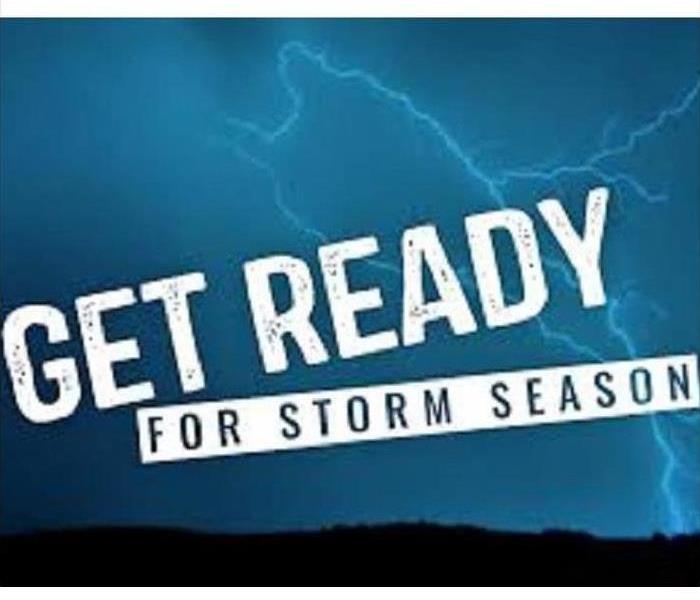
Hindsight is always 20/20. When we look back we always see signs we missed, mistakes we made and things that could have gone a lot better. Emergencies are no different. After an emergency like a natural disaster a power outage or something else there is general talk about how things could have been better and “What If’s”. There is a lot of talk in the Pacific Northwest about the Cascadia earthquake or even lesser earthquakes that would still do damage in our area; we hear about the damage that will be done, the likelihood of it being in X amount of years and so on. We can’t exactly plan a disaster that will occur but we can plan how we will react. We can plan now how we will get out of town from our homes, works or other high-frequency locations. We can plan on how all members of the family will respond after a disaster if say it happens while you are at work and your kids are in school. Making a plan on how your family will reconnect and where can eliminate fear about such an event as well as confusion should a disaster occur. Now is the time to plan for your evacuation route, do not wait until a disaster strikes to make a plan to keep your family safe. #SERVPRO
SERVPRO of Sooland specializes in the cleanup and restoration of residential and commercial property after a fire, smoke or water damage event. We can handle any size disaster!
Call SERVPRO of Sooland (712) 274-2416
Prevent Further Storm Damage By Using Certified Technicians
1/28/2020 (Permalink)
While storm damage may have happened on only one side or corner of your home, that damage can quickly spread. Water that has been able to enter during the storm through any openings created by falling trees or broken glass can evaporate and find its way into other rooms, and even onto other levels of your home.
Removing Storm Damage and the Mess it Makes Should be Done Carefully and Professionally
Storm damage can cause unexpected hazards. If your Sooland home or small business has experienced storm damage, you should not attempt to clean the debris up yourself. We have professional technicians who are trained in clearing away the debris. We have experience in extracting standing water, cleaning water-damaged items and structures, and can help prevent mold growth.
Cleaning alone is often not enough, as storm damage and subsequent rainfall will damage interior structures. We can prevent much of the damage, and repair what has already taken place. Repairs and restoration work can be done so that the new materials match the original ones. We have training and certification in restorative work that makes this possible.
From removing the debris to final restorative touches, we can quickly make things look “Like it never even happened,” ensuring you and your family can return to your home safely. The same goes for your small business or office. Don't let storm damage ruin your home or your business.
For storm damage clean up and repairs, call SERVPRO of Sooland 24/7 at (402) 466-4004. We will respond to your emergency as quickly as possible to start cleaning up the debris and repairing the damage.
SERVPRO of Sooland specializes in the cleanup and restoration of residential and commercial property after a fire, smoke or water damage event. We can handle any size disaster!
Call us at (712) 274-2416
Beware Lightning During A Thundersnow Event!
1/28/2020 (Permalink)
Thundersnow. Strong winter snowstorms and blizzards commonly produce lightning strikes, a phenomenon referred to as 'thundersnow'. More uncommon than spring and summer thunderstorms, thunder snows do occur in the Midwest, and they are bred by the same unstable weather conditions. Essentially, they are thunderstorms that occur in colder months, and they are accompanied by thunder and lightning. Lightning and thunder can occur with any type of winter precipitation - including snow, sleet ('thundersleet') and freezing rain.
Faster Response
Since we are locally owned and operated, we are able to respond quicker with the right resources, which is extremely important. A fast response lessens the damage, limits further damage, and reduces the restoration cost.
SERVPRO of Sooland specializes in the cleanup and restoration of residential and commercial property after a fire, smoke or water damage event. We can handle any size disaster!
Call us at (712) 274-2416
Different Types of Storm Damage
10/28/2019 (Permalink)
Living in the Midwest can always be a challenge particularly in Lincoln and surrounding areas. There are many types of storm damage that can affect your home or business. Some of these include wind damage, flood damage, and hail damage. Here are some tips to consider should storm damage hit your home or commercial property.
Wind damage
High Wind are common occurrence in Nebraska. Your roof is particularly susceptible. Roof leaks can often lift shingles, cause cracks, and even remove portions or complete roofs. Flying debris can also cause cracks and holes in your siding or cause leakage through chimneys and soffit gable vents. All of these may factor into water invading your residence or business.
Roof Leaks.
Why are roof leaks from storm damage so hard to detect? Many storms may loosen flashing creating a problem that is not visible to the naked eye. Loose flashing can cause roofs to leak occur even up to weeks after the initial storm occurs. Even a small roof leak can produce damp, moldy conditions inside your home or business. Your best bet is to secure a repair immediately after the wind damage. Doing so can prevent long-term interior damage. Contacting a storm damage professional at SERVPRO of Lincoln will guarantee you a comprehensive damage assessment and repair of services needed to give you peace of mind and protect your home or business long term.
Flood damage and recovery
If Your home or business is near water or in a low lying area, flood water damage is a risk. Heavy rains and snow may cause water damage to your property.Many factors such as flood pump failures, and frozen pipes can factor in causing additional damages such as contaminated ground water invading your property.
By relying on a train SERVPRO trained Water Damage Restoration Specialist, you will obtain faster storm remediation. Our experts will recommend ways to help mitigate flood water damage in the future, for instance, by requesting back up flood pump installation.
Hail Damage
Hail may Be one of the most overlooked causes of major storm damage. Hail Can damage not just your roof but also your siding, roof decking, exterior walls, or any detached sheds or outbuildings. You may believe that you have escaped any damage to your home especially with damage that is not always visible to the naked eye. Hail damage can cause small bruises to your shingles that overtime will expand, becoming larger, therefore causing rain to penetrate through the base of the shingles and intrude your attic space. This can lead to moldy conditions and interior leaks to your property over an extended period of time. Again, at the smallest evidence of moisture issues after a storm it is wise to contact the SERVPRO of Lincoln to do a thorough inspection of your property and make necessary repairs to prevent long-term damages and mold issues.
SERVPRO of Sooland specializes in the cleanup and restoration of residential and commercial property after a fire, smoke or water damage event. We can handle any size disaster!
Call SERVPRO of Sooland (712) 274-2416
Be Prepared
2/20/2019 (Permalink)
The American Red Cross encourages that each household and car have a preparedness kit, but sadly only 51.5% of US homes reportedly have an emergency kit ready. Kits should include things like water, canned food, a can opener, flashlights and batteries, including enough food and water for each person in your household for 5 days. Start with a power outage kit, grab an old backpack or duffle and add in plenty of bottled water, battery-operated radio and clock, flashlight for each member of your household including extra batteries, non-electric can opener, list of emergency phone numbers including family and friends and a first aid kit.
SERVPRO of Sooland specializes in the cleanup and restoration of residential and commercial property after a fire, smoke or water damage event. We can handle any size disaster!
Call SERVPRO of Sooland (712) 274-2416
Getting your house ready for the weather.
2/20/2019 (Permalink)
Cold temperatures can take their toll on your home and property, it is important that you prepare your home for cold weather to limit risks and potential damages. When preforming maintenance and insuring that you are limiting risks of damage it is important to be thorough while inspecting your home. Install foam-rubber gaskets behind electrical outlets & switch covers on exterior walls and if you don’t use your fireplace, plug the flue with an inflatable plug. If water damage occurs in your home due to extreme weather or anything else, make sure to call the team with experience.
SERVPRO of Sooland specializes in the cleanup and restoration of residential and commercial property after a fire, smoke or water damage event. We can handle any size disaster!
Call SERVPRO of Sooland (712) 274-2416
Winterizing your windows and doors
2/20/2019 (Permalink)
Cold temperatures can take their toll on your home and property, it is important that you prepare your home for cold weather to limit risks and potential damages. When preforming maintenance and insuring that you are limiting risks of damage it is important to be thorough while inspecting your home. Make sure that you replace any broken windows and re-putty any loose window panes, seal around windows and door trims or use weather stripping for windows that are opened. If water damage occurs in your home due to extreme weather or anything else, make sure to call the team with experience.
SERVPRO of Sooland specializes in the cleanup and restoration of residential and commercial property after a fire, smoke or water damage event. We can handle any size disaster!
Call SERVPRO of Sooland (712) 274-2416
Don't let your gutters be a problem this winter.
1/28/2019 (Permalink)
Cold weather can wreak havoc and cause costly damage to your home or business if you are not property prepared. Whether it is heavy rain, freezing temperatures, damaging winds, sleet or snow, all can cause serious property damage. While you cannot control the weather, you can take steps to be prepared, and help take the sting out of winter weather. To help prevent weather-related damages, consider taking the following precautions before winter weather hits. Roofs, water pipes and gutters should all be inspected to ensure they are in proper order. Gutter downspouts should be directed away from your building. Clear gutters of debris that may have gathered during the fall. Leaves and other obstructions can lead to a damming effect, causing roof damage and interior water problems.
SERVPRO of Sooland specializes in the cleanup and restoration of residential and commercial property after a fire, smoke or water damage event. We can handle any size disaster!
Call us at (712) 274-2416
Floods are the most common natural disaster in the US.
1/28/2019 (Permalink)
Floods rank as one of the most common and widespread natural disasters in the United States. Whether you live near a coastline, along a city streets, in the mountains, out in the country, or even in the desert, there is potential for flooding. Anywhere it can rain, it can flood. In the past ten years, the average annual flood losses in the U.S. were more than $29. Billion according to floodsmart.gov. A variety of events can cause flooding, like: heavy rains, when ocean waves come onshore, if snow melts too fast, or when dams or levees break. A flooding event may occur over a long periods and could last days, weeks, or longer.
SERVPRO of Sooland specializes in the cleanup and restoration of residential and commercial property after a fire, smoke or water damage event. We can handle any size disaster!
Call us at (712) 274-2416
What to know about Tornadoes
10/15/2018 (Permalink)
Although tornadoes occur in many parts of the world, these destructive forces of nature are found most frequently in the United States east of the Rocky Mountains during the spring and summer months. In an average year, 800 tornadoes are reported nationwide, resulting in 80 deaths and over 1,500 injuries. A tornado is defined as a violently rotating column of air extending from a thunderstorm to the ground. The most violent tornadoes are capable of tremendous destruction with wind speeds of 250 mph or more. Damage paths can be in excess of one mile wide and 50 miles long. Once a tornado in Broken Bow, Oklahoma, carried a motel sign 30 miles and dropped it in Arkansas!
What Causes Tornadoes?
Thunderstorms develop in warm, moist air in advance of eastward-moving cold fronts. These thunderstorms often produce large hail, strong winds, and tornadoes. Tornadoes in the winter and early spring are often associated with strong, frontal systems that form in the Central States and move east. During the spring in the Central Plains, thunderstorms frequently develop along a "dryline," which separates very warm, moist air to the east from hot, dry air to the west. Tornado-producing thunderstorms may form as the dryline moves east during the afternoon hours.
How Do Tornadoes Form?
Before thunderstorms develop, a change in wind direction and an increase in wind speed with increasing height creates an invisible, horizontal spinning effect in the lower atmosphere. Rising air within the thunderstorm updraft tilts the rotating air from horizontal to vertical. An area of rotation, 2 - 6 miles wide, now extends through much of the storm. Most strong and violent tornadoes form within this area of strong rotation
Tornadoes Take Many Shapes and Sizes
Weak Tornadoes
- 69% of all tornadoes
- Less than 5% of tornado deaths
- Lifetime 1-10+ minutes
- Winds less than 110 mph
Strong Tornadoes
- 29% of all tornadoes
- Nearly 30% of all tornado deaths
- May last 20 minutes or longer
- Winds 110-205 mph
Violent Tornadoes
- Only 2% of all tornadoes
- 70% of all tornado deaths
- Lifetime can exceed 1 hour
- Winds greater than 205 mph
Tornado Myths:
MYTH: Areas near rivers, lakes and mountains are safe from tornadoes.
FACT: No place is safe from tornadoes. In the late 1980's, a tornado swept through Yellowstone National Park leaving a path of destruction up and down a 10,000 ft. mountain.
MYTH: The low pressure with a tornado causes buildings to "explode" as the tornado passes overhead.
FACT: Violent winds and debris slamming into buildings cause most structural damage.
MYTH: Windows should be opened before a tornado approaches to equalize pressure and minimize damage.
FACT: Opening windows allows damaging winds to enter the structure. Leave the windows alone; instead, immediately go to a safe place.
Tornadoes can occur at any time of the year
- In the southern states, peak tornado occurrence is in March through May, while peak months in the northern states are during the summer.
- Note, in some states, a secondary tornado maximum occurs in the fall.
- Tornadoes are most likely to occur between 3 and 9 p.m. but have been known to occur at all hours of the day or night.
- The average tornado moves from southwest to northeast, but tornadoes have been known to move in any direction. The average forward speed is 30 mph but may vary from nearly stationary to 70 mph.
- The total number of tornadoes is probably higher than indicated in the western states. Sparse population reduces the number reported.
What to Listen For...
- SEVERE THUNDERSTORM WATCH: Severe thunderstorms are possible in your area.
- SEVERE THUNDERSTORM WARNING: Severe thunderstorms are occurring.
- TORNADO WATCH: Tornadoes are possible in your area. Remain alert for approaching storms.
- TORNADO WARNING: A tornado has been sighted or indicated by weather radar. If a tornado warning is issued for your area and the sky becomes threatening, move to your pre-designated place of safety.
Remember, tornadoes occasionally develop in areas in which a severe thunderstorm watch or warning is in effect. Remain alert to signs of an approaching tornado and seek shelter if threatening conditions exist. Environmental CluesLook out for:
- Dark, often greenish sky
- Wall cloud
- Large hail
- Loud roar; similar to a freight train
Caution: Some tornadoes appear as a visible funnel extending only partially to the ground.
Some tornadoes are clearly visible while others are obscured by rain or nearby low-hanging clouds. It's Up to YOU!
Each year, many people are killed or seriously injured by tornadoes despite advance warning. Some did not hear the warning while others received the warning but did not believe a tornado would actually affect them. This preparedness information, combined with timely severe weather watches and warnings, could save your life in the event a tornado threatens your area. After you have received the warning or observed threatening skies, YOU must make the decision to seek shelter before the storm arrives. It could be the most important decision you will ever make.
Commercial Storm Damage Restoration
3/19/2018 (Permalink)
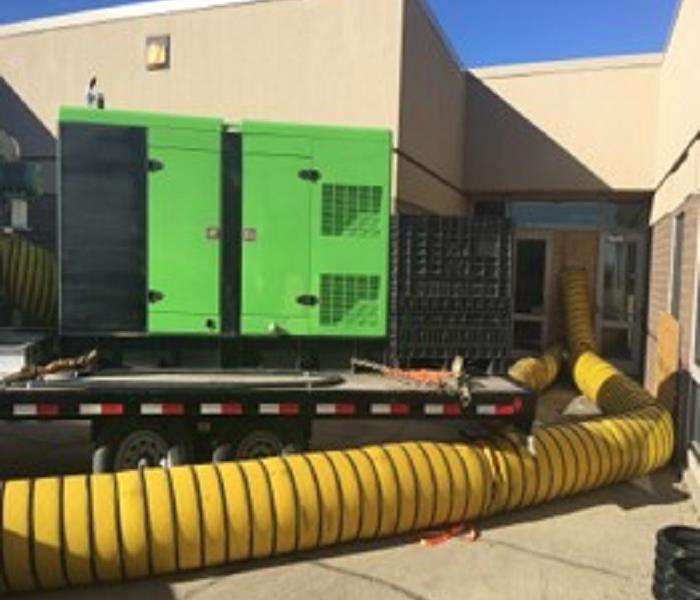 SERVPRO of Sooland
3220 Line Drive
Sioux City, IA 51106
SERVPRO of Sooland
3220 Line Drive
Sioux City, IA 51106
Storms and inclement weather can bring wind damage, heavy rain, and flooding that can devastate any business in a matter of minutes. There’s never a convenient time for flooding or water damage to strike, and storms don’t just strike during regular business hours; that’s why SERVPRO Franchise Professionals offer 24 hour emergency service 365 days per year.
Every hour spent cleaning up is an hour of lost revenue and productivity. So when an emergency situation arises in your business, give our Professionals a call and they’ll be there fast with the help you need.
Storm or Flood Damage? Call Us Today (712) 274-2416
The SERVPRO Disaster Recovery Team can provide help whether it’s a tornado, hurricane, blizzard or flood. The SERVPRO System has a network of strategically positioned storm teams on standby should a disaster strike near you. Available 24 hours a day and 365 days a year, SERVPRO Franchise Professionals are prepared for the unpredictable. Learn more about the Disaster Recovery Team.
Regardless of the Storm Damage, SERVPRO of Sooland can help
3/19/2018 (Permalink)
Storm and flood damage can be devastating. Immediate action is needed, and you need the company with storm damage experience. SERVPRO Franchise Professionals have the expertise and the resources to handle any size disaster and can respond immediately to storm and flooding conditions.
Have Storm or Flood Damage?
Call Us Today (712) 274-2416
SERVPRO Franchise Professionals
- Provide 24/7 Emergency Service
- Highly Trained Water Restoration Specialists
- Faster to Any Size Disaster
- A Trusted Leader in the Restoration Industry with over 1,700 Franchises
Storms occur with little warning and can be especially devastating, so you’ll need the company that you can trust to rise to the occasion. Regardless of the type of storm, SERVPRO of Sooland Professionals can handle any size disaster. During catastrophic storms and major events, our Disaster Recovery Team can respond quickly with additional resources.
- Flooding caused by heavy rains
- Hurricanes and tidal surges
- Tornadoes and wind damage
- Ice and snowstorms
- Wild fires
What to do until help arrives
3/19/2018 (Permalink)
After any water damage situation, your primary focus should be safety:
- Is it safe to stay in the house?
- Electrical and "slip and fall" hazards are some of the most prevalent concerns.
- Only do activities that are safe for you to perform.
- Wet materials can be VERY heavy. Be careful!
Have A Water Damage Emergency?
Call (712) 274-2416
With over 1,700 Franchises nationwide, there’s a SERVPRO Professional nearby and ready to serve you.
What To Do After Flooding
- Remove excess water by mopping and blotting.
- Wipe excess water from wood furniture after removal of lamps and tabletop items.
- Remove and prop wet upholstery and cushions.
- Place aluminum foil or wood blocks between furniture legs and wet carpeting.
- Turn air conditioning on for maximum drying in summer.
- Remove colored rugs from wet carpeting.
- Remove art objects to a safe, dry place.
- Gather loose items from floors.
What NOT To Do After Flooding
- Don't leave wet fabrics in place. Hang furs and leather goods.
- Don't leave books, magazines or other colored items on wet carpet or floors.
- Don't use your household vacuum to remove water.
- Don't use television or other household appliances.
- Don't turn on ceiling fixtures if ceiling is wet, and keep out of rooms where ceilings are sagging.
Biohazard Cleanup? Call SERVPRO of Sooland
3/19/2018 (Permalink)
Biohazard contaminants should be considered very dangerous as they can pose a serious health risk. Sewer backups and flood water are two common biohazard scenarios that can affect homes and businesses. SERVPRO Franchise Professionals have the training, protective gear, and specialized equipment necessary to safely clean and restore this type of contamination.
Need Biohazard Cleanup?
Call Us Today (712) 274-2416
After any biohazard or sewage contamination in your home or business, your primary focus should be safety:
- Is it safe to stay in the house?
- Exposure to biological and chemical contaminants can pose serious health consequences.
- Flood water can contain sewage, pesticides, and other contaminants.
- Only do activities that are safe for you to perform.
What to Do After a Contamination
- Stay out of affected areas.
- Call emergency service personnel if the situation is life-threatening.
- Treat all bodily fluids as if they are contaminated.
- Turn off the HVAC system if there is sewage damage.
What Not to Do After a Contamination
- Don’t leave wet fabrics in place. Hang furs and leather goods.
- Don’t leave books, magazines, or other colored items on wet carpet or floors.
- Don’t use your household vacuum to remove water.
- Don’t use television or other household appliances.
- Don’t turn on ceiling fixtures if ceiling is wet, and keep out of rooms where ceilings are sagging.
24 Hour Emergency Service
Biohazards like flood water or sewer backups should be considered an emergency and dealt with as quickly as possible. SERVPRO of Sooland Professionals are water damage restoration specialists and have specific training and expertise to safely remediate biohazard contaminants.
Reducing Storm Damage
3/16/2018 (Permalink)
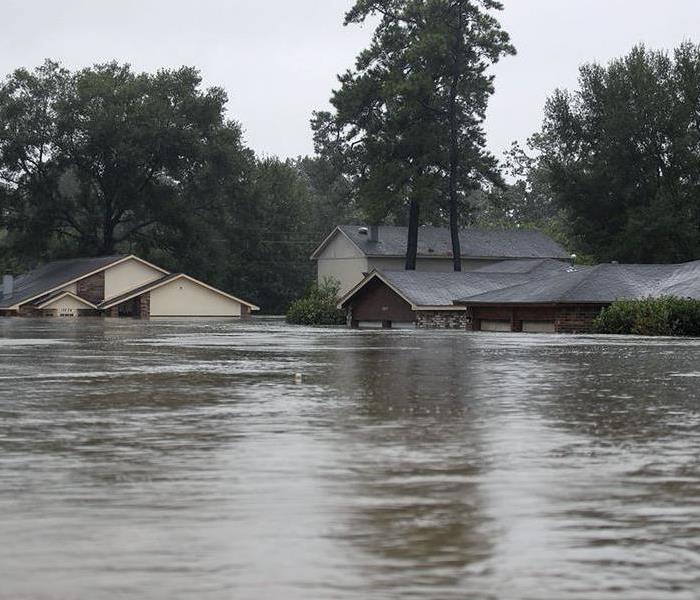 Call us today for more information, 712-274-2416!
Call us today for more information, 712-274-2416!
Reduce flood damage to your home.
More great information from https://disastersafety.org/
While flooding can occur at any time of year, the spring is a particularly troublesome time of year as snow and ice melts and seasonal rains begin. IBHS suggests the following improvement projects to help protect property against potential flood damage.
Flooding and flash flooding are a leading cause of weather-related fatalities in the United States, according to the National Weather Service. Floods are also the most common weather-related cause of property damage in the nation. During Hurricane Sandy, many property owners were caught off guard by the risk that flooding posed as the storm came ashore. This misunderstanding of their flood risk led to many deaths and injuries. Homes were washed away, and businesses were heavily damaged by flood waters. Ultimately, Sandy resulted in $6.7 billion in National Flood Insurance Program (NFIP) payouts as of July 2013, second only to Hurricane Katrina’s $16.3 billion in payouts in August 2005, according to the Insurance Information Institute.
Understand Your Flood Risk
Updated Flood Maps
A flood map (sometimes referred to as a floodplain map or FEMA flood map) can be used to identify floodplain location and flood zones. IBHS encourages residents to learn about the flooding risk of their properties and take steps to reduce that risk. The best place to start is by finding out what flood zone, from high to low risk, your property is in. The Federal Emergency Management Agency (FEMA) works with each municipality to create and update flood maps that show the flood zone for each part of the community. You can look up your property on the local flood map by visiting FEMA’s Flood Map Service Center or contacting your city or county government. Your insurance agent or mortgage lender may also be able to assist.
Floods maps are redrawn by FEMA to reflect new information and recommendations. In fact, many communities are currently receiving new, more detailed flood maps as part of an ongoing flood map modernization effort by FEMA. Consult your city or county building department to determine if your local maps have been or will soon be updated. If an update has recently been completed or is ongoing, it is recommended that you review the maps to see if the redrawing has affected the flood zone for your property.
Additional information on looking up your property on flood maps and the meaning of the flood zone designations is available at FloodSmart.gov. It is important to note that there are many times when a building can experience flood damage—even if it is not located within a high-risk flood area on the flood map. Therefore, it is best to get an understanding of the flood zone of your entire surrounding area to fully understand your risk.
Know Your Base Flood Elevation
Once you know what flood zone your property is in, it is important to find out what the Base Flood Elevation (BFE) is for your property. The BFE is the elevation at which your building has a one percent chance of flooding annually. You can find the BFE for your property listed on many flood maps, especially newer ones, or by contacting your local building department, or hiring a licensed surveyor. After identifying the BFE for your property, you need to determine whether the elevation of your building’s lowest floor is above or below the published BFE for your property. If your building is below the BFE for the area, you should consider elevating your structure to reduce the chances it will flood. IBHS recommends that buildings be at least 3 feet above the BFE to account for higher-than-expected flooding levels.
Flood Insurance
Once you know what your risk is, you also should consider purchasing flood insurance, especially if you find you are in, or near, a high-risk flood zone (Special Flood Hazard Area). Flood insurance is provided through the federal National Flood Insurance Program (NFIP), and can be purchased through private insurance agents and companies. If you have a federally backed mortgage, be aware that your lender may require you to purchase flood insurance if you are in or near a high-risk flood zone.
- Raise Electrical System Components—Hire a licensed electrician to raise electric components (switches, sockets, circuit breakers and wiring) at least 12 inches above the base flood elevation (BFE) for your area. You can find out your property’s BFE by contacting your local building department. Raising electrical system components above the anticipated flood level will help prevent damage to the electrical system and avoid the potential for fire from short circuits in flooded systems.
- Raise or Floodproof HVAC Equipment—Floodwaters can extensively damage heating, ventilation, and cooling (HVAC) equipment. The extent of the damage depends upon the depth of flooding and how long the equipment is underwater. A good way to protect the HVAC equipment is to have a contractor move it to an upper floor or build a flood-proof wall around the equipment.
- Direct Water Away From Building—Make sure your yard’s grading (slope) directs water away from the building.
- Anchor Fuel Tanks—Unanchored fuel tanks outside your home can damage your building or be swept downstream, damaging other properties. The supply line to an unanchored tank in your basement also can tear free and fuel can contaminate your basement.
- Install Sewer Backflow Valves—Flooding in some areas can cause sewage from sanitary sewer lines to back up through drain pipes. Backflow valves are designed to block drain pipes temporarily and prevent return flow into the house.
- Sump Pumps—Make sure your sump pump is working properly and battery is fully charged.
- Protect Wells From Contamination by Flooding—Floodwater that enters a well can contaminate it and make the water unsafe to drink. A licensed well-drilling contractor can inspect your well and suggest improvements.
Keeping Your Home Storm Damage Safe
3/5/2018 (Permalink)
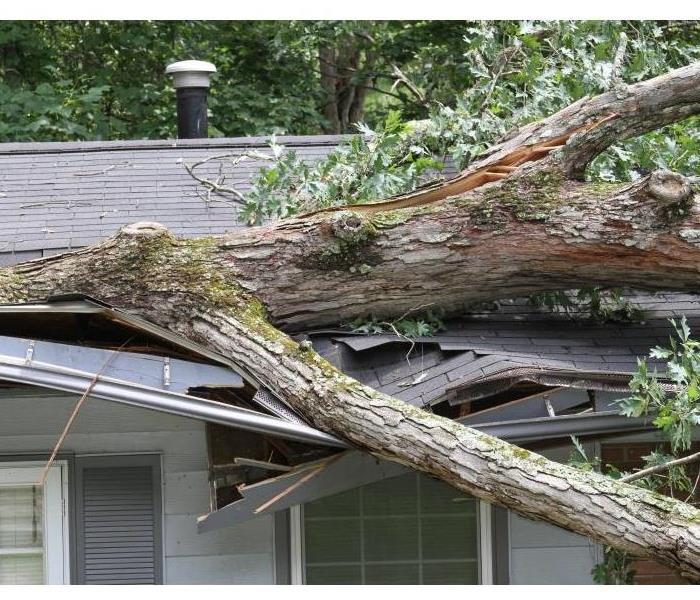 Broken tree branch due to storm damage.
Broken tree branch due to storm damage.
Storms can come upon us without much warning. Yes, we watch the news, but bad weather is still unpredictable, so we need to take steps to keep our homes safe from storm damage.
An inspection of your home’s premises is a really good idea to conduct before inclement weather hits. A leaky roof or windows can cause big problems during extreme conditions such as a snow storm or heavy rains. Do all your exterior doors and windows fit correctly? Is all your weather-stripping in good condition? When’s the last time you took a look at your roof to see how things are looking up there? These are all great questions to ask yourself.
Loose shutters and rain gutters can present a real problem in high winds, as can unstable large trees. It might be a good idea to trim back trees and bushes with large heavy branches that are not in good condition, so that windows and vehicles are not in danger of storm damage in windy conditions.
Many homes in older cities have drainage ditches at the front of the property. Take time to inspect this area and remove debris or dirt that might obstruct the flow of water from a heavy rain. A clogged drainage ditch can cause a lot of damage by flooding your property during, or even after, a storm.
Your family is very precious to you. In the event of a storm, do you have a system in place that will help you to get information to everyone in case of a weather emergency? Most of us use our cell phones to communicate these days, but in the case of a bad storm, your cell phone service could be at risk. You might consider installing a good old-fashioned landline, just in case. If you or a family member gets stuck at work or out doing errands, families will worry, so it’s vital that lines of communication stay open.
The SERVPRO team of Sooland has your back in the event of storm damage, fire damage, or mold issues. You can give us a call today at (712) 274-2416, or visit us on our website:
http://www.SERVPROSOOLAND.COM
When Storms or Floods hit, SERVPRO of Sooland is Ready!
12/20/2017 (Permalink)
 "Ready for whatever happens."
"Ready for whatever happens."
SERVPRO of Sooland specializes in storm and flood damage restoration. Our crews are highly trained and we use specialized equipment to restore your property to its pre-storm condition.
Faster Response
Since we are locally owned and operated, we are able to respond quicker with the right resources, which is extremely important. A fast response lessens the damage, limits further damage, and reduces the restoration cost.
Resources to Handle Floods and Storms
When storms hit, we can scale our resources to handle a large storm or flooding disaster. We can access equipment and personnel from a network of 1,650 Franchises across the country and elite Disaster Recovery Teams that are strategically located throughout the United States.
Have Storm or Flood Damage? Call Us Today - (712) 274-2416






 24/7 Emergency Service
24/7 Emergency Service




